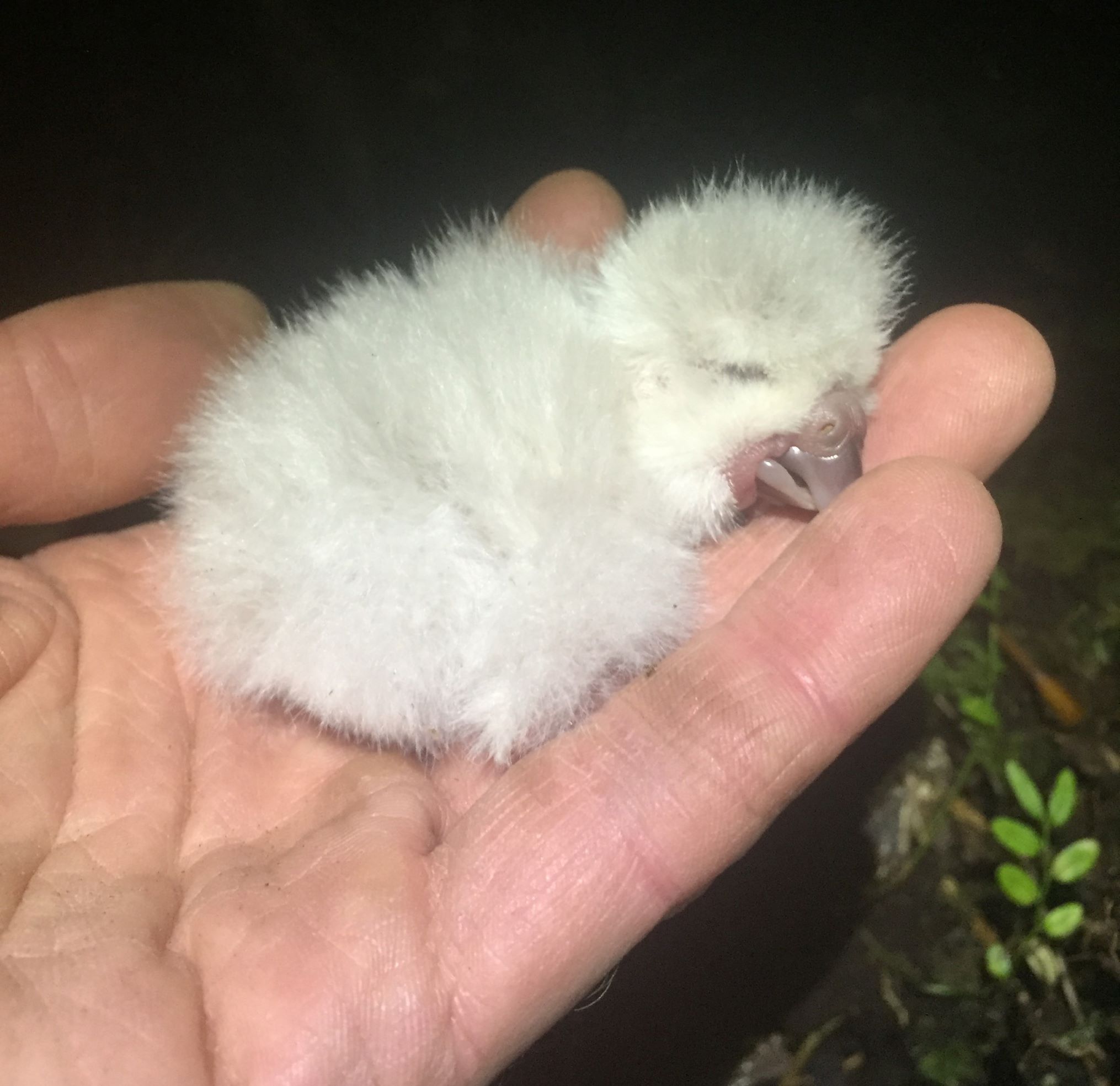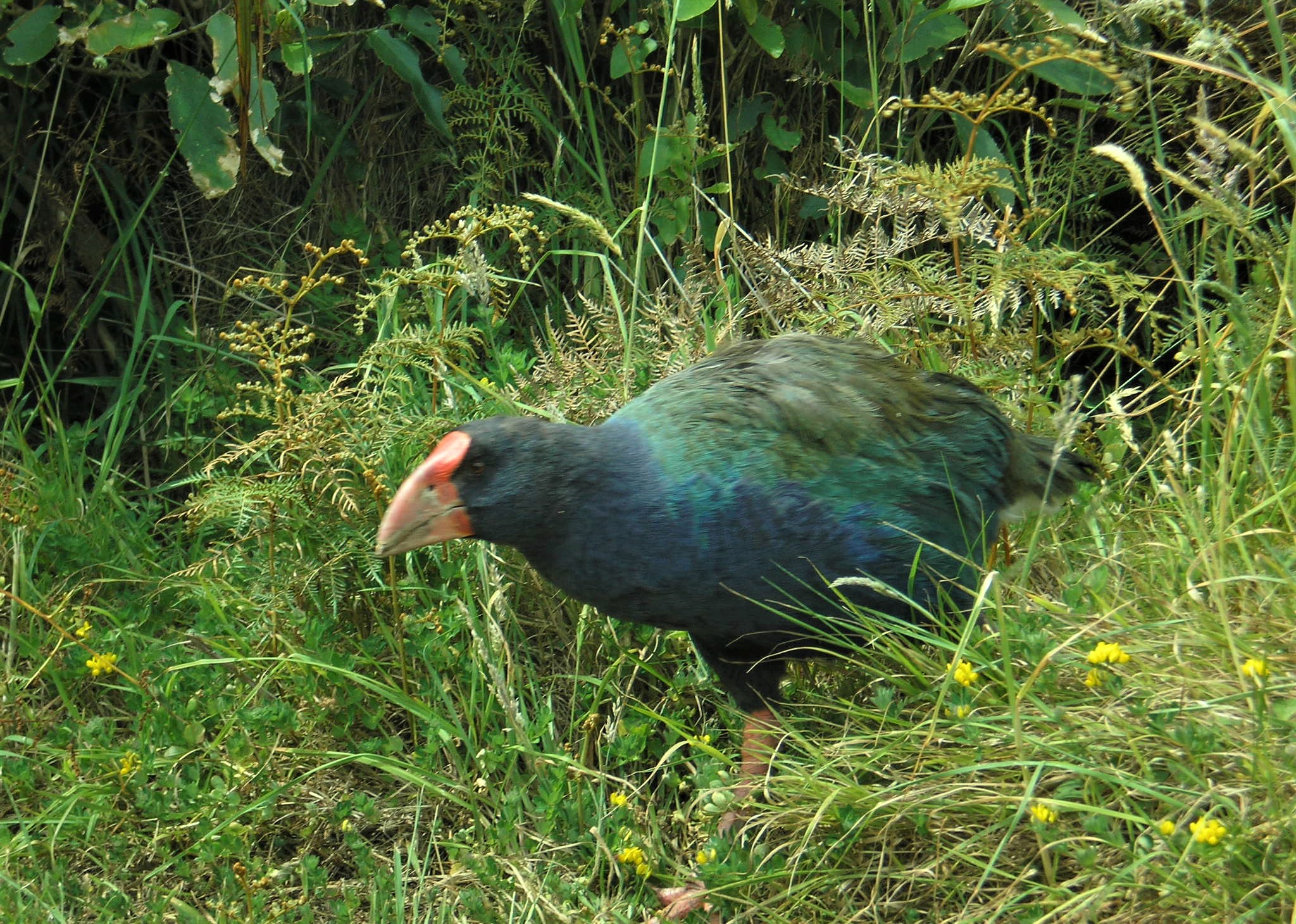- Scientists in New Zealand are combining tracking, genomics, and drone technologies to save the kākāpō, the giant flightless parrot nearly eradicated by invasive predators, such as dogs, rats, and cats brought by human settlers.
- Data loggers on a predator-free island read information emitted by transmitters worn by each of the birds and send the data to the research team; the information tells researchers where birds are nesting, when birds are sick, and when (and with whom) a given bird mated.
- The team supplements natural kākāpō breeding with artificial insemination, including flying a sperm-carrying drone that can swiftly move sperm from a male to an appropriate female across the island, which the researchers believe helps keep the sperm more viable when it reaches the female.
- For this, scientists “match” male and female kākāpō using genetic analysis to determine how closely related the two birds are and choose mates that are most distantly related. The research team is reviewing genomic data from all adult kākāpō for clues about fertility and disease.
In 1995, there were only 51 kākāpō left on Earth, and it seemed that the giant flightless parrots were headed for extinction. Once abundant in New Zealand, the ground-dwelling kākāpō (Strigops habroptila) were easy prey for invasive predators, such as dogs, rats, cats and stoats, brought by human settlers.
In a last-ditch effort to save the kākāpō, conservationists evacuated them to three tiny islands: Codfish Island (Whenua Hou), Maud Island, and Little Barrier Island (Te Hauturu-o-Toi). Monumental efforts were made to eradicate predators from these islands to protect both the kākāpō and their eggs from being eaten.

Even without invasive predators, the kākāpō aren’t out of the woods yet. There are just 147 adults alive today, and the kākāpō is listed as critically endangered. Because all living kākāpō are descended from 51 birds, there is very little genetic diversity in the population. This inbreeding has reduced kākāpō fertility and could make them more susceptible to diseases as well.
Tracking kākāpō
In spite of their large size (they can weigh up to four kilograms, or nine pounds), kākāpō can be surprisingly hard to keep track of. The birds are nocturnal, spending most of the day hidden in dense vegetation. When they do venture out, their speckled green and brown feathers keep them camouflaged in the undergrowth or in the trees, which they climb using only their claws and beaks.
Kākāpō researchers are combining a suite of technologies to help keep track of their subjects. “Every single kākāpō wears a smart transmitter,” Andrew Digby, the scientific advisor for the kākāpō recovery program, told Mongabay. The island is equipped with data loggers that read information emitted by the transmitters and send it to the research team. The team uses this system to find where birds are nesting and figure out when birds are sick. By looking at activity data, researchers can also tell when (and with whom) a given bird mated.

Breeding season
For kākāpō conservationists, each breeding season is of the utmost importance. “Every time we get a chance to make more kākāpō, we have to make the most of it,” Digby said. Kākāpō breed only once every few years, when the local trees, including Rimu trees, produce abundant fruit. The Rimu fruit is high in calcium and vitamin D, which are needed to build the bones and eggshells of developing chicks.
The conservation team has a few tricks up their sleeves for getting the most out of each breeding season. Researchers want birds to be at optimal weight for the strenuous process of courtship, inter-male competition, egg-laying, and chick-raising. During breeding season, the kākāpō sanctuary is equipped with “smart” hoppers for food; each hopper only opens when it detects the transmitter of a specific bird. These hoppers also automatically detect the weight of each bird, allowing researchers to monitor the birds’ health status.
Although birds are allowed (and encouraged) to breed naturally, the conservation team is also hard at work on an artificial insemination program. “The more times a female mates, the more fertile her eggs are,” Digby said. So even if a female has already mated naturally, artificial insemination is still a useful tool for increasing the number of fertile eggs.

But artificial insemination is tricky when your subjects are wild creatures. “One of the issues we have doing artificial insemination is just the practical aspect of getting the sperm from the male to the female as quickly as possible,” Digby said. “Most people who do artificial insemination in birds do it in captive birds, so you’ve got the male and the female right next to each other. We have a male on one side of the island down a hole, and a female might be on the other side of the island up a tree.”
It can take a person over an hour to get from one side of the forested Codfish Island to the other, during which time the sperm could become less viable. The conservation team has come up with an ingenious solution: a sperm-carrying drone. Digby says that the drone can fly across the island in about five minutes. Researchers hope this quicker trip will mean that the sperm is more viable when it reaches the female.
But conservationists don’t pair up kākāpō randomly; the matchmaking process is actually quite scientific. Researchers use genetic analysis to determine how closely related two kākāpō are and choose mates that are most distantly related. Digby said that the research team has recently sequenced the entire genome of every adult member of the species; the team is currently combing through these data for clues about fertility and disease.
A bumper crop
Are all of these high-tech interventions worth it? The proof is in the pudding. This year has been a record year for kākāpō breeding, with 75 living chicks produced so far. Some chicks are already making the transition into adulthood, leaving the nest to explore their terrain and trading their fuzzy grey baby feathers for striking emerald and brown adult plumage. Gulliver, a male with rare genetic characteristics, had never successfully bred before, but this year, he and female Suzanne produced three chicks. If these chicks survive to adulthood, they will be important resources for preserving kākāpō genetic diversity.

Lessons learned
Digby says that many of the techniques developed for kākāpō conservation are now being applied to other species of endangered birds. Digby himself also works on a conservation project for the takahē, another endangered New Zealand bird, and he says there’s a lot of crossover between the two projects.
The technologies developed for the kākāpō project are also being using internationally. For example, Digby said the smart food hoppers are being used for Hawaiian crows, which researchers are trying to re-establish in nature after the crows became extinct in the wild in 2002. “It’s really nice to be able to give back a little bit,” Digby said.

Although the program’s goals are conservative for now – they want to reach 150 adult females – they are cautiously hopeful that one day the kākāpō population will outgrow their small island sanctuaries. A team from Australia have even studied kākāpō fossil records to help determine potential areas for reintroduction based on the kākāpō’s previous stomping grounds.
Digby sees the kākāpō project as not just important for the birds themselves, but also as a catalyst to get people more invested in conservation. “The amount of interest that we get from around the world just blows me away,” Digby said. “There’s something about the birds that people love.” With donations coming in from across the globe and a dedicated conservation team, the future looks bright for these charismatic birds.
FEEDBACK: Use this form to send a message to the editor of this post. If you want to post a public comment, you can do that at the bottom of the page.